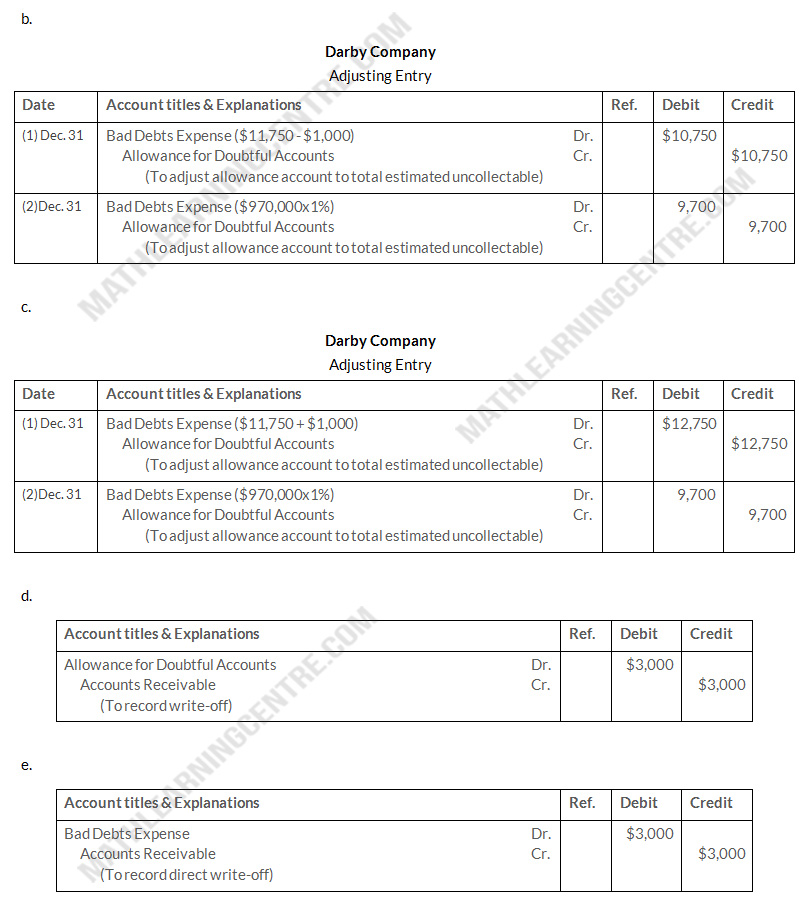At December 31, 2019, the trial balance of Darby Company contained the following accounts before adjustment.

Instructions
- Based on the information given, which method of accounting for bad debts is Darby Company using-the direct writ-off method or the allowance method? How cay you tell?
- Prepare the adjusting entry at December 31, 2019, for bad debt expense under each of the followign independent assumptions.
- An aging schedule indicates that $11,750 of accounts receivable will be uncollectible.
- The company estimates that 1% of sales will be uncollectible.
- Repeat part (b) assuming that instead of a credit balance there is a $1,000 debit balance in allowance for Doubtful Accounts.
- During the next month, January 2020, a $3,000 account receivable is written off as uncollectible. Prepare the Journal entry to record the write-off.
- Repeat part (d) assuming that Darby uses the direct write-off method instead of the allowance method in accounting for uncollectible accounts receivable.
- What type of account is Allowance for Doubtful Accounts? How does it affect how accounts receivable is reported on the balance sheet at the end of the accounting period?
Solution
a.
The company used the Allowance method used because the balance of the Allowance for Doubtful Accounts exists on there. Allowance of Doubtful Accounts does not exist when the company used direct write-off method.

f.
Allowance for Doubtful Accounts is a contra account to Accounts Receivable. The company deducts the allowance account from accounts receivable in the current assets section of the balance sheet so that Accounts receivable on the balance sheet at their cash (net) realizable value.
